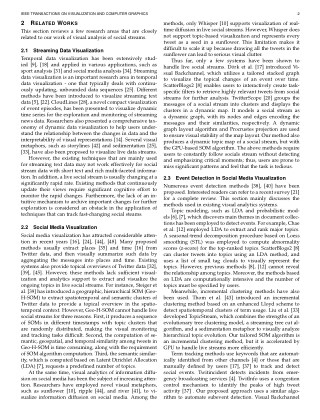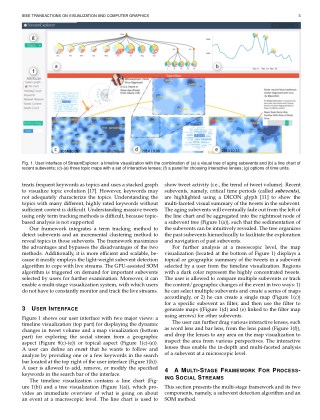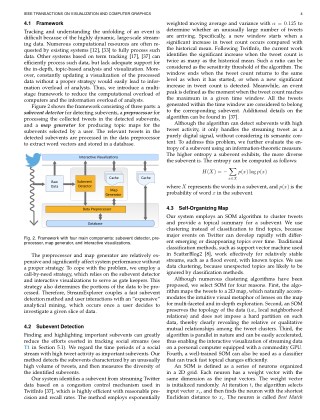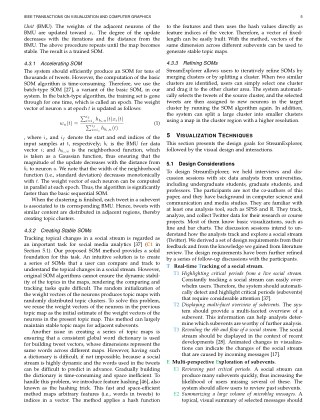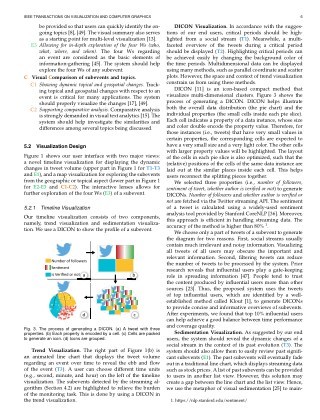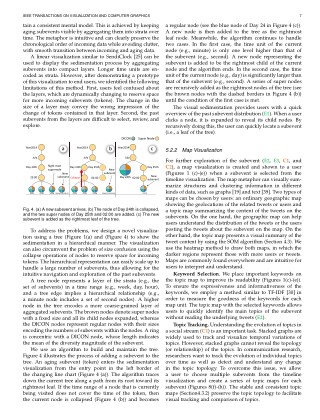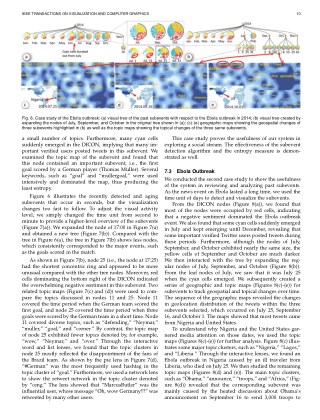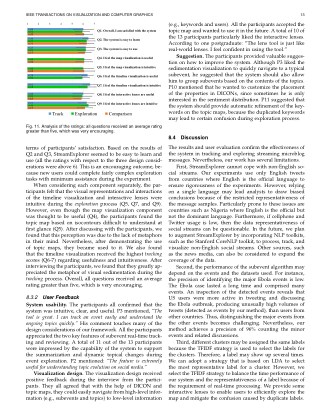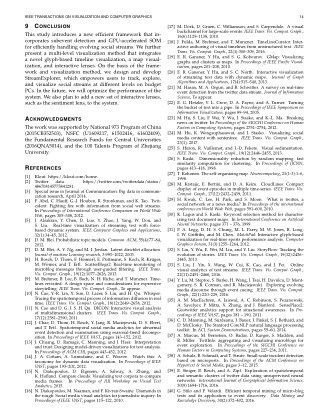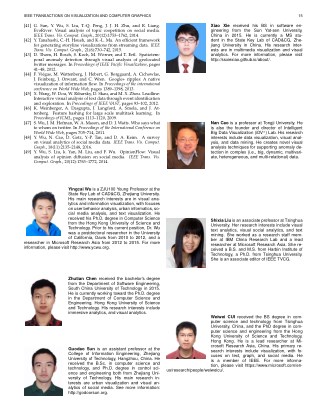StreamExplorer: A Multi-Stage System for Visually Exploring Events in Social Streams
Yingcai Wu1
Zhutian Chen*2
Guodao Sun3
Xiao Xie*1
Nan Cao4
Shixia Liu5
Weiwei Cui6
Authors associated with * were the students supervised by Yingcai Wu when this work was done.
1State Key Lab of CAD & CG, Zhejiang University
2Hong Kong University of Science and Technology
3Zhejiang University of Technology
4Tongji University
5Tsinghua University
6Microsoft Research, Beijing

Analyzing social streams is important for many applications, such as crisis management. However, the considerable diversity, increasing volume, and high dynamics of social streams of large events continue to be significant challenges that must be overcome to ensure effective exploration. We propose a novel framework by which to handle complex social streams on a budget PC. This framework features two components: 1) an online method to detect important time periods (i.e., subevents), and 2) a tailored GPU-assisted Self-Organizing Map (SOM) method, which clusters the tweets of subevents stably and efficiently. Based on the framework, we present StreamExplorer to facilitate the visual analysis, tracking, and comparison of a social stream at three levels. At a macroscopic level, StreamExplorer uses a new glyph-based timeline visualization, which presents a quick multi-faceted overview of the ebb and flow of a social stream. At a mesoscopic level, a map visualization is employed to visually summarize the social stream from either a topical or geographical aspect. At a microscopic level, users can employ interactive lenses to visually examine and explore the social stream from different perspectives. Two case studies and a task-based evaluation are used to demonstrate the effectiveness and usefulness of StreamExplorer.
Download [paper] [video(28MB)]
The work was supported by National 973 Program of China (2015CB352503), NSFC (U1609217, 61502416, 61602409), the Fundamental Research Funds for Central Universities (2016QNA5014), and the 100 Talents Program of Zhejiang University.
Copyright © 2017 by Yingcai Wu. All rights reserved

